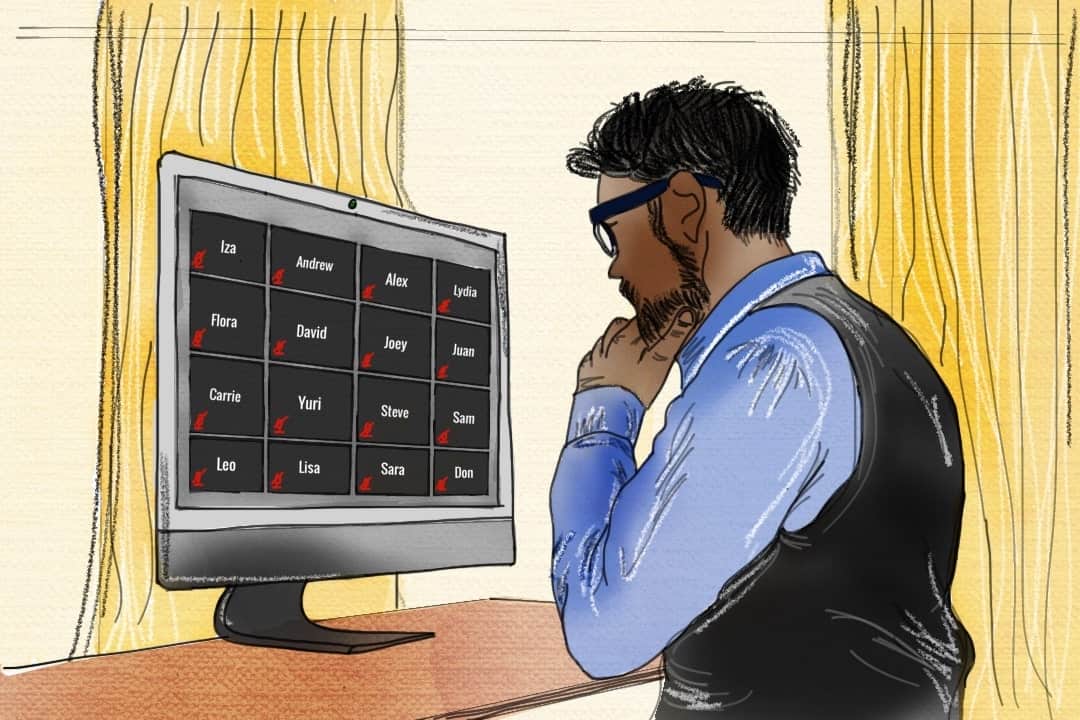A recent publication authored by Kathleen Gallagher, a professor at the Ontario Institute for Studies in Education — in coalition with Christine Balt, Nancy Cardwell, and Brooke Charlebois, PhD students at the Department of Curriculum, Teaching and Learning — examines the effects of the COVID-19 pandemic on the social interactions of students in a high school drama class.
The article, though academic in nature, takes on a contemplative quality rather than an analytical one, which, the authors remark, mirrors the informality that the pandemic has brought with it. Every one of us is learning new ways to work and interact during a pandemic, and to match that, the authors have written what they call “an essay of musings.”
The authors commented on a number of changes that they observed in the students’ “personal geographies,” or social interactions. One change in student behaviour that was observed with the shift to online classes was the level of student engagement on online platforms.
They give the anecdotal example of a teacher who, pre-pandemic, was competing with smartphones for the attention of drama students. However, with the shift online, they notice students opting out of digital audio and visual contributions. It’s an interesting change — a generation that is so often characterized as tech-savvy recedes from these types of interactions once their environments become oversaturated with the digital.
The Varsity had the opportunity to interview Gallagher. “The irony of shifting into online teaching was that once [the students’] worlds became fully digital, they didn’t even want to be seen,” she said. “Over the course of the term, the camera started coming off. So the teacher was speaking into an abyss.” This, I think, resonates with many of us in synchronous lectures and tutorials.
In my experience, I have had to work much harder to absorb information from online lectures, whether pre-recorded or not. There is something to be said about the sound of fellow students typing away with you in a lecture hall; I find it much easier to focus in the presence of others who are working toward the same goal.
Gallagher spoke to the dilemma of perceived focus and how difficult it can be, even in person, for instructors to assess whether or not a student is engaged. A student could have the body language to give the illusion of being focused, while their mind is elsewhere. As such, it is difficult for an instructor to assess engagement under normal circumstances — and this is exacerbated with online learning.
Now more than ever, we are accountable for our own progress. As Gallagher put it, “With the online world, you are making decisions at every moment about whether you are checking in or checking out. So my hope, when we go back to some other… consistently live form of learning, is that people become more conscious of the ways in which they are paying attention or not.”
She also spoke about access and the barriers between young people and engagement in online platforms. There are a series of technological requirements for digital learning platforms, and having to share them with others, especially in a small living space, can quickly put a strain on one’s learning.
Gallagher explained that through this online shift, it is more difficult to ignore existing inequities and that the pandemic represents a “chance to revisit and revise all kinds of policy frameworks that we’ve operated from for a long time.”
I think that many U of T students would agree with this statement. Since the start of the pandemic, students have had to navigate unreliable wi-fi connections, different time zones, and, for some international students, certain websites being banned in the country where they are living.
Gallagher provided some great insights throughout our interview, but I think this next one might be my favourite. In regard to social interactions in a post-pandemic future, she said: “There may not be as much desire to escape the moment that you’re in.”
I would like to think that out of these times of isolation, a newfound appreciation for communities — and for each other — will emerge. We can’t always control the situation that we’re thrown into, but we do have a choice in how we respond to it, and my hope is that, as per Gallagher’s prediction, we will realize that we have a responsibility to be present for one another.


